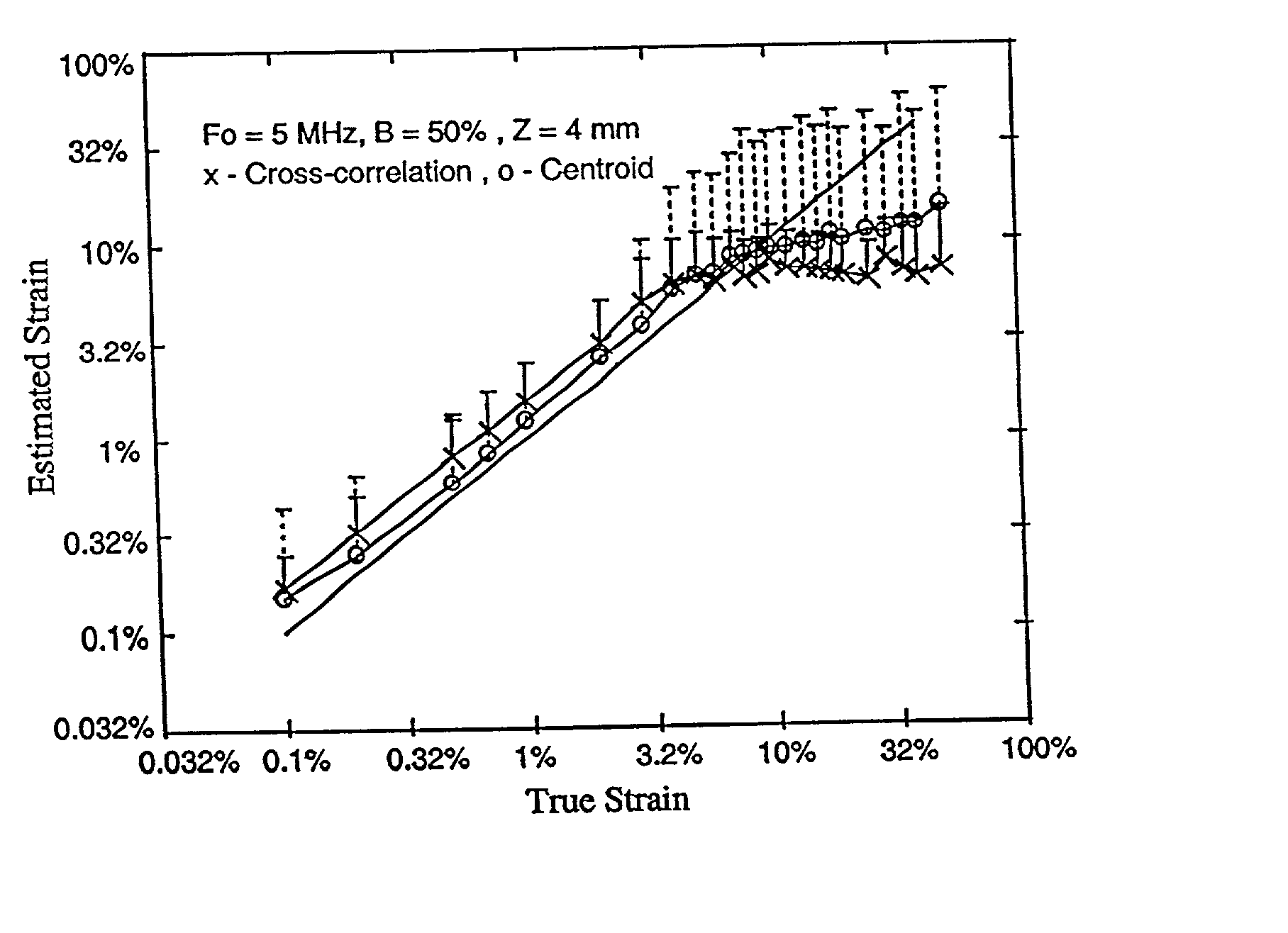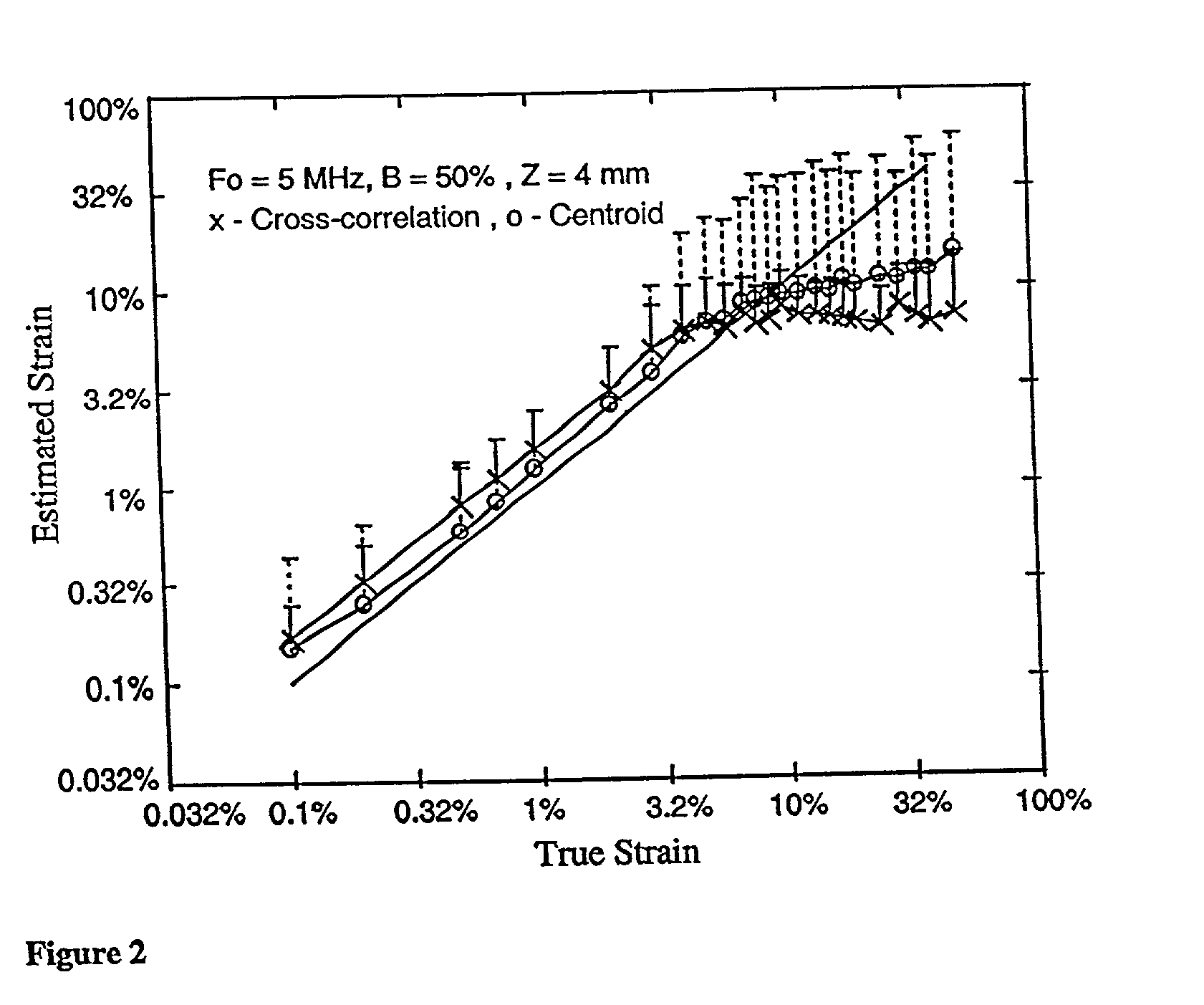Power spectral strain estimators in elastography
a technology of elastography and power spectral strain, applied in the direction of instruments, using reradiation, ultrasonic/sonic/infrasonic diagnostics, etc., can solve the problems of filter strain (sf, not very robust, decorrelation might be encountered)
- Summary
- Abstract
- Description
- Claims
- Application Information
AI Technical Summary
Problems solved by technology
Method used
Image
Examples
Embodiment Construction
[0062] Simulation results using a 1-D scattering model is used in this section to illustrate the performance of the centroid strain estimator. Strain estimation using the centroid is also compared to the standard cross-correlation based algorithm.
[0063] Monte-Carlo simulations in MATLAB (Mathworks, Inc., Natick, Mass., USA) are used to generate pre- and post-compression RF signals for a 30 mm target segment and sampled at 48 MHZ. The speed of sound in tissue was assumed-to be-constant at 1540 m / s. The PSF was simulated using a Gaussian modulated cosine pulse with a wave number=20.4 mm (5 MHZ center frequency, 50% bandwidth), and a 0.2138 mm standard deviation unless stated otherwise. The scattering function consisted of randomly distributed point scatterers following a uniform distribution with density of 40 scatterers / pulse-width in order to simulate Gaussian statistics. We assume that the uniformly distributed scatterers are of a sufficient number to generate an echo signal with c...
PUM
| Property | Measurement | Unit |
|---|---|---|
| frequency | aaaaa | aaaaa |
| frequency | aaaaa | aaaaa |
| speed | aaaaa | aaaaa |
Abstract
Description
Claims
Application Information
 Login to View More
Login to View More - R&D
- Intellectual Property
- Life Sciences
- Materials
- Tech Scout
- Unparalleled Data Quality
- Higher Quality Content
- 60% Fewer Hallucinations
Browse by: Latest US Patents, China's latest patents, Technical Efficacy Thesaurus, Application Domain, Technology Topic, Popular Technical Reports.
© 2025 PatSnap. All rights reserved.Legal|Privacy policy|Modern Slavery Act Transparency Statement|Sitemap|About US| Contact US: help@patsnap.com



